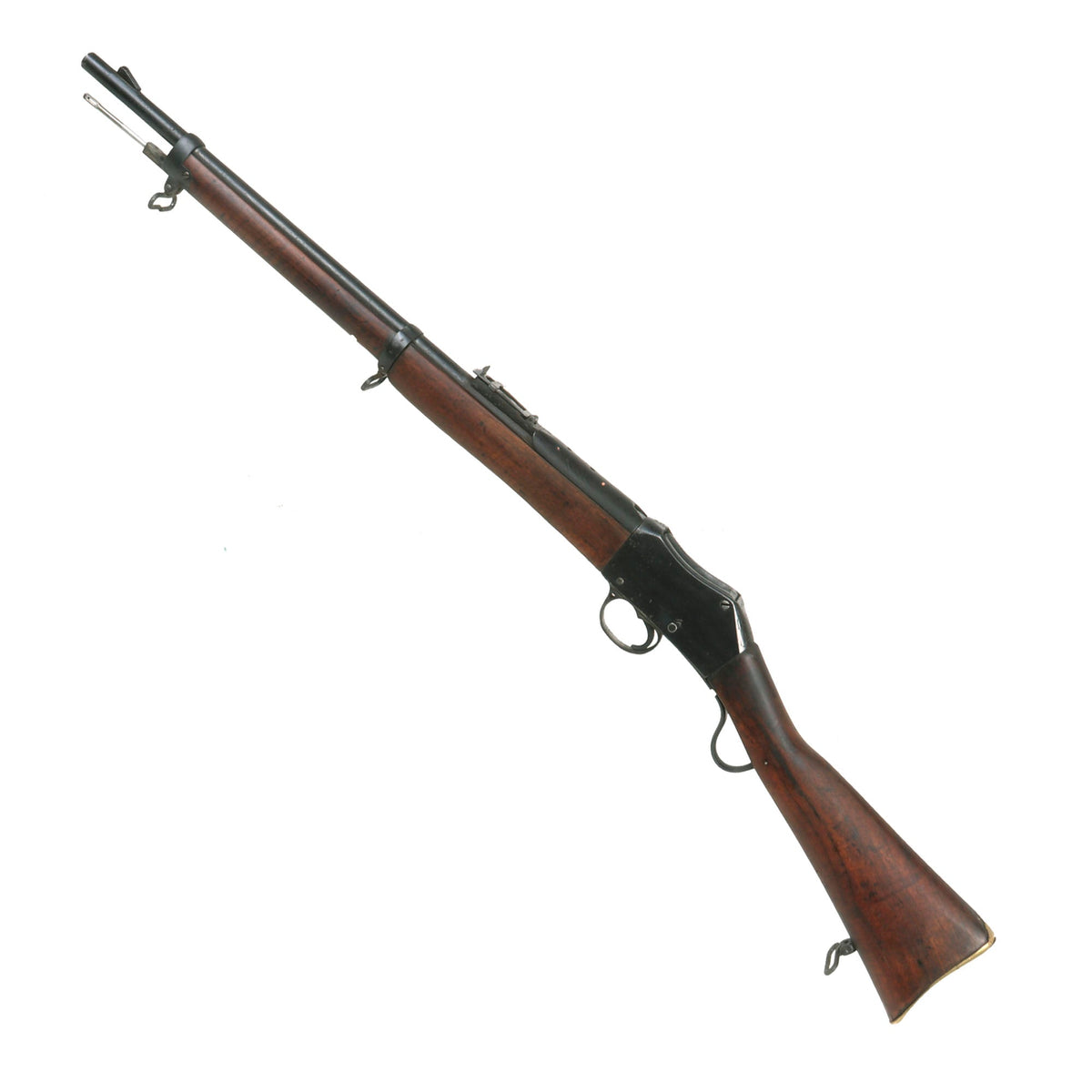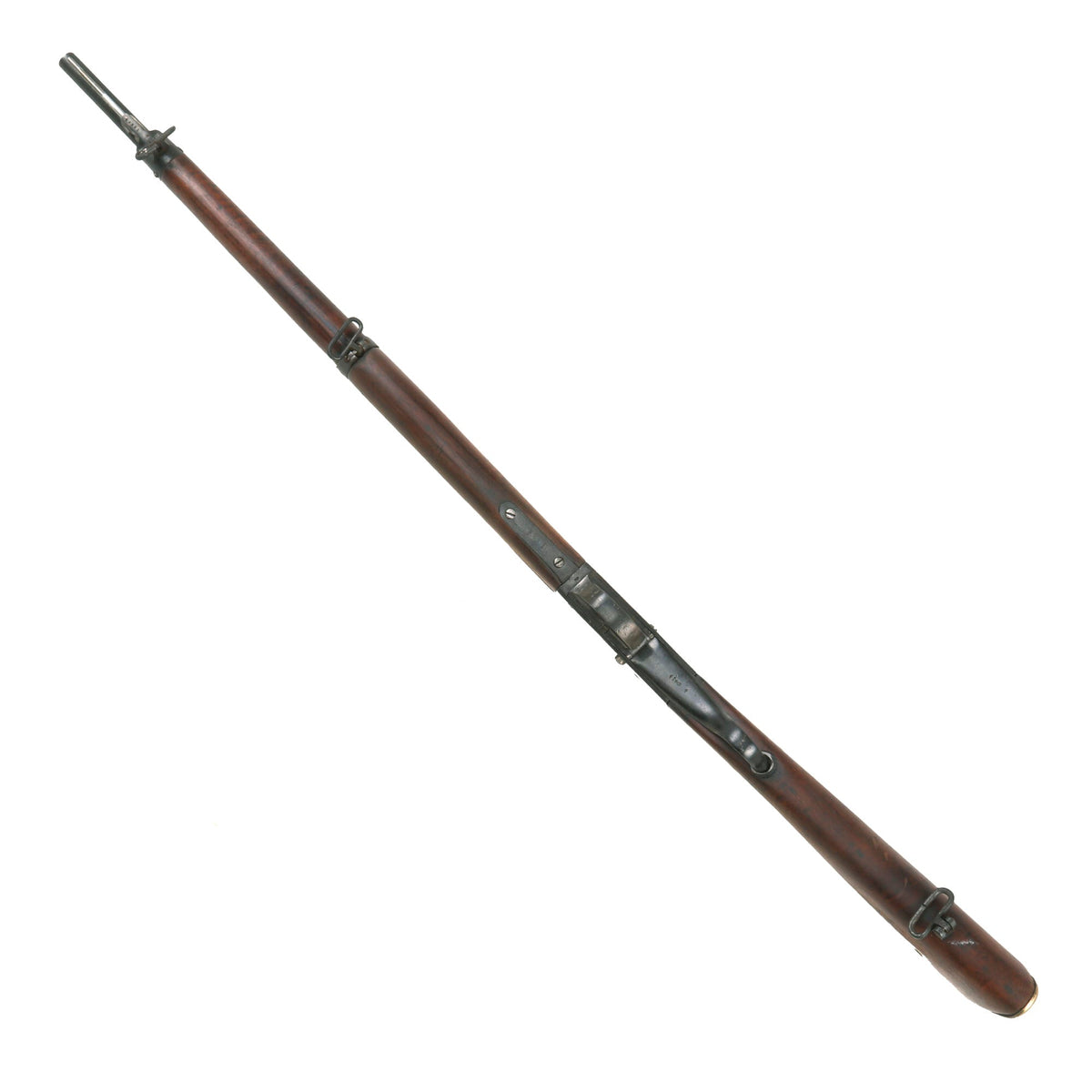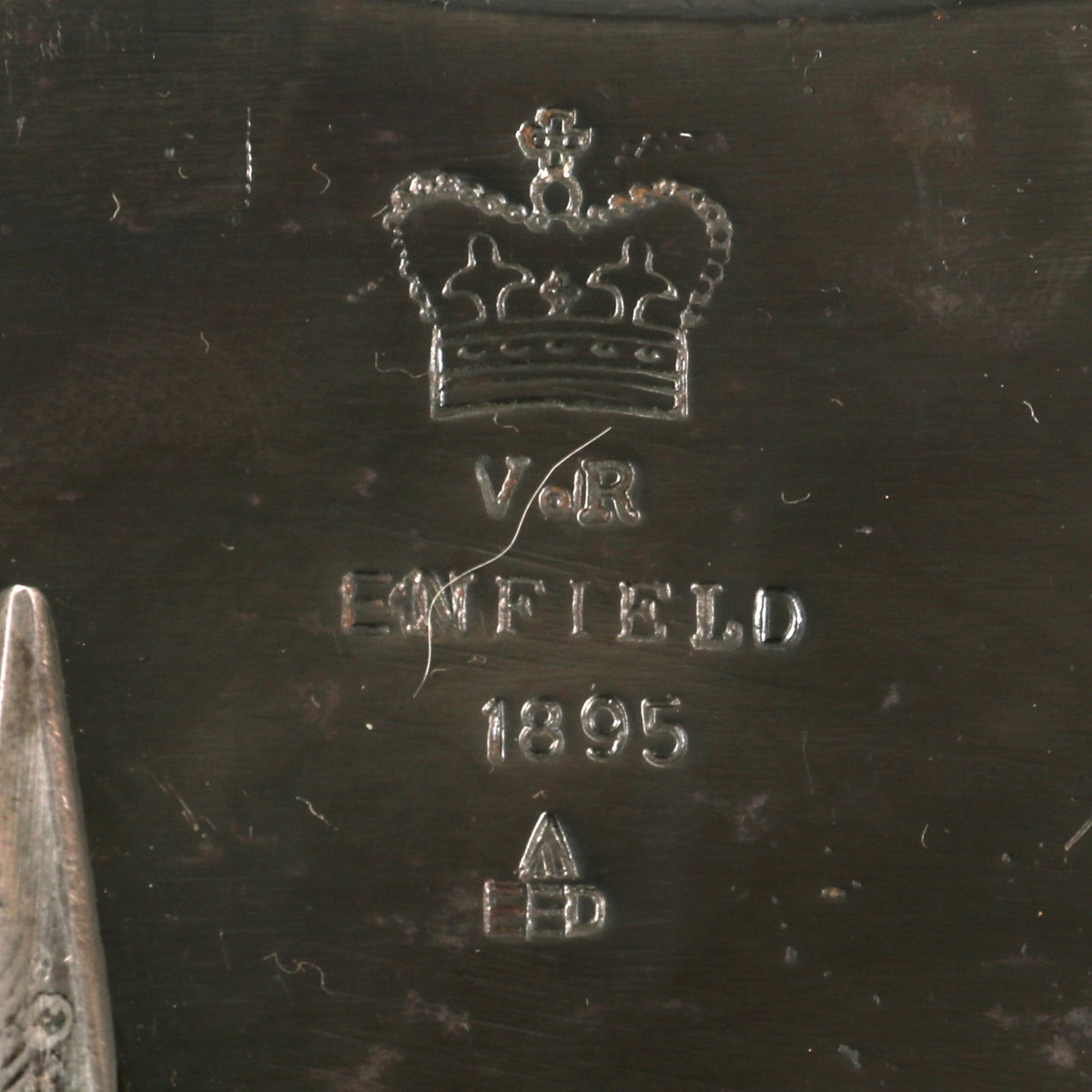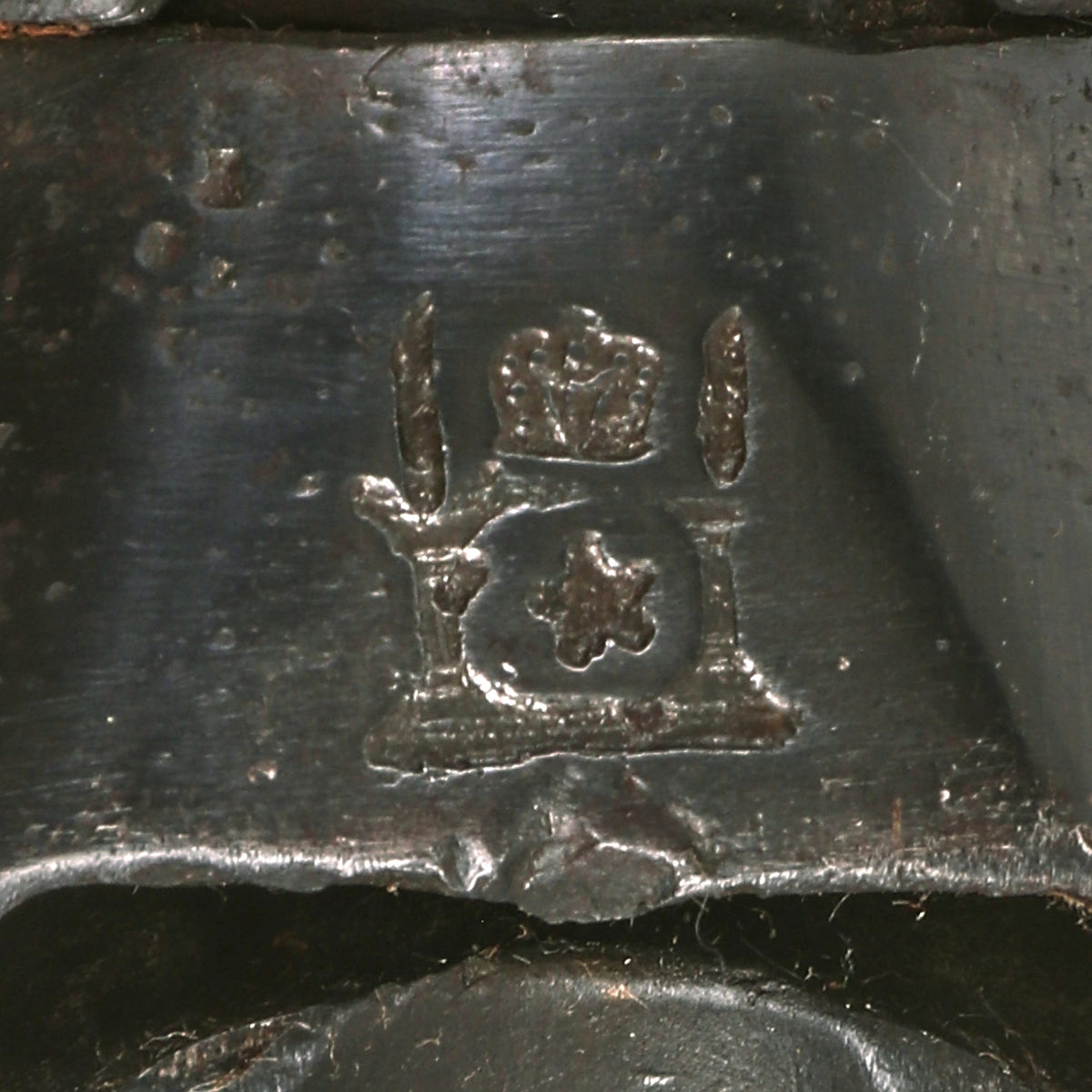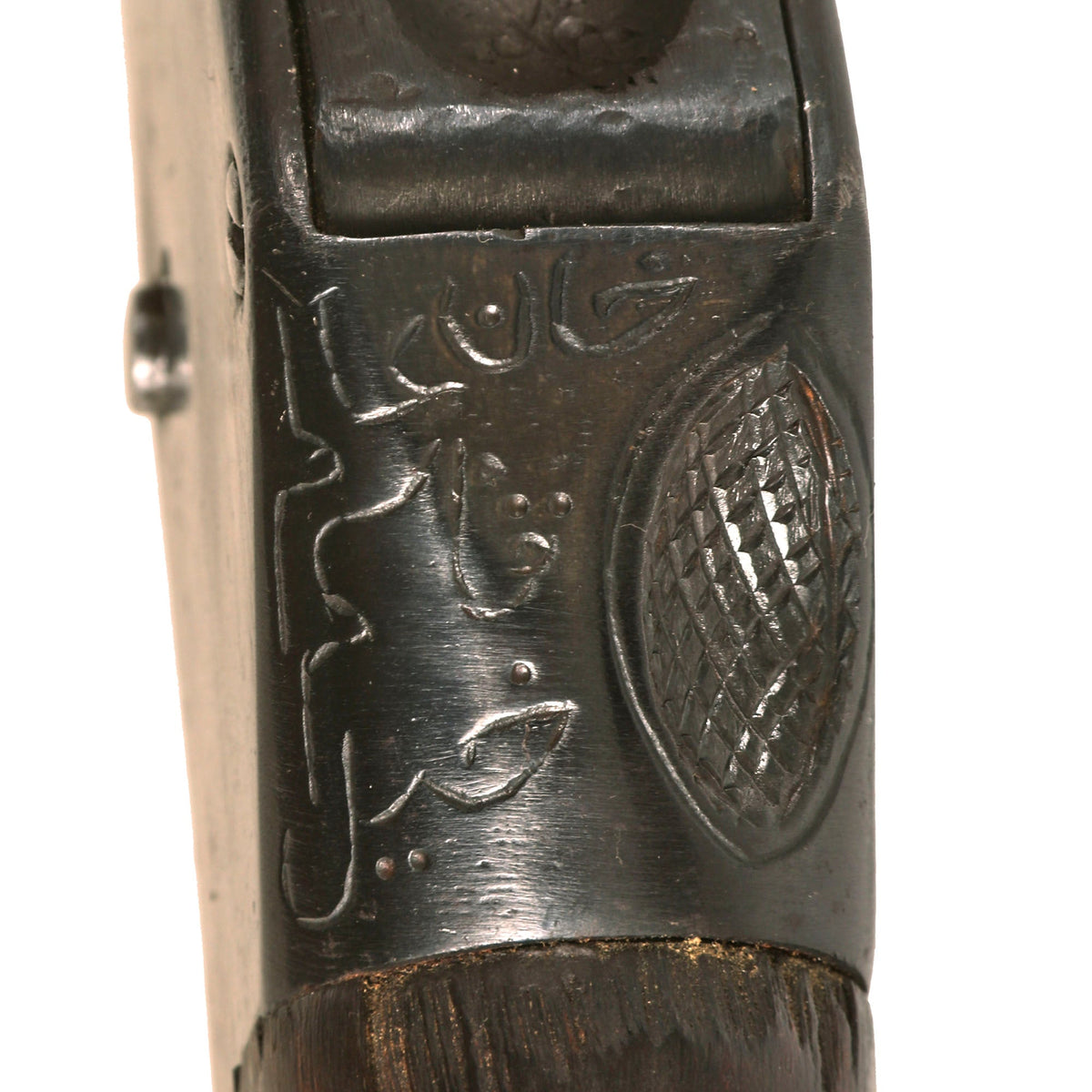Original Afghan “Khyber Pass” Copy of a British Martini-Enfield .303 Artillery Carbine – circa 1895 Original Items
$ 795,00 $ 238,50
Original Item: Only One Available. These are often encountered today, due to the U.S Military’s involvement with Afghanistan. Traditionally the British converted .450/.577 Martini Rifles to .303 caliber, but in this case, possibly in Northern India by the Khyber Pass, this little carbine was locally manufactured probably entirely by hand. Occasionally original British parts were used when acquired, and many parts on this do bear what look to be British marks, but those could also be replicated.
After production, these carbines were then sold to the visiting Afghan tribesmen who came through the pass to trade for what they understood to be “BRITISH MADE WEAPONS”. Many U.S. G.I.’s purchased such weapons when deployed in KABUL over the last 20 years, and shipped them home to the United States as War Trophies.
The Martini action, adopted by the British in 1871 was one of the strongest ever developed and saw military service in England and the Empire, in one form or another for almost seventy years. The most famous action of course being the defense of Rorke’s Drift in Natal, South Africa in the 1879 Zulu War. They saw extensive use all over the British Empire.
NOT A GUN WE WOULD SHOOT, sold for Collection purposes ONLY. It looks to have been refinished and possibly remarked recently, and now has a very nice blued finish and a lovely look to the woodwork. It has simulated British proof marks in many areas, and there were even new markings added to the right side of the receiver:
(CROWN)
V·R
ENFIELD
1895
(Arrow)
EED
Inspection shows that this is definitely the wrong font for the period, and there are other issues as well that mean it was definitely not British assembled. It is very possible that British parts were used during construction, as some parts definitely look to be of superior workmanship than others. They may have been harvested from weapons left behind or captured over the years.
The metal used on these is definitely not the same quality as British Steel, and the bore is fairly worn, though it does show relatively clear rifling. The action moves correctly, with the extractor presenting when opened, and it does have a crisp dry fire when the trigger is pulled.
Already 125 years old and rated “ANTIQUE”. With the attractive stock and refinished metalwork, this will make a great wall hanger. Ready to display!
Specifications-
Year of Manufacture: circa 1896
Caliber: .303 British
Cartridge Type: Centerfire Cartridge
Overall Length: 21 Inches
Overall Length: 37 Inches
Action type: Falling-Block
Feed System: Single Shot
Fast Shipping with Professional Packaging
Thanks to our longstanding association with UPS FedEx DHL, and other major international carriers, we are able to provide a range of shipping options. Our warehouse staff is expertly trained and will wrap your products according to our exact and precise specifications. Prior to shipping, your goods will be thoroughly examined and securely secured. We ship to thousands clients each day across multiple countries. This shows how we're dedicated to be the largest retailer on the internet. Warehouses and distribution centres can be located throughout Europe as well as the USA.
Note: Orders with more than one item will be assigned a processing date depending on the item.
Before shipping before shipping, we'll conduct a thorough inspection of the items you have ordered. Today, the majority of orders will be delivered within 48 hours. The delivery time will be between 3-7 days.
Returns
The stock is dynamic and we cannot completely manage it because multiple stakeholders are involved, including our factory and warehouse. So the actual stock may alter at any time. It's possible that you may not receive your order once the order has been made.
Our policy is valid for a period of 30 days. If you don't receive the product within 30 days, we are not able to issue a refund or an exchange.
You can only return an item if it is unused and in the same state as the day you received it. You must have the item in its original packaging.
Related products
Uncategorized
Uncategorized
Uncategorized
Australian WWII Owen MK1 Machine Carbine SMG Custom Fabricated Replica with Sling Original Items
Uncategorized
Uncategorized
Uncategorized
Uncategorized
Uncategorized
Uncategorized
Uncategorized
Armoured Fighting Vehicles of the World: AFVs of World War One (Hardcover Book) New Made Items
Uncategorized
Uncategorized
Angolan Rebel 1970s era 60mm Inert Display Mortar from Angolan Civil War Original Items
Uncategorized
Uncategorized
Uncategorized
Uncategorized
Armored Burgonet Helmet & Polearm from Scottish Castle Leith Hall Circa 1700 Original Items
Uncategorized
Uncategorized
Uncategorized
Uncategorized

